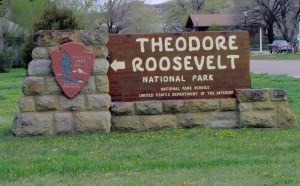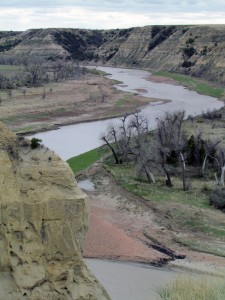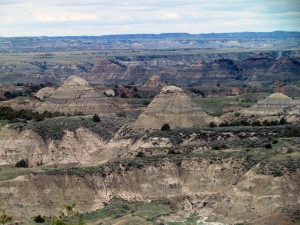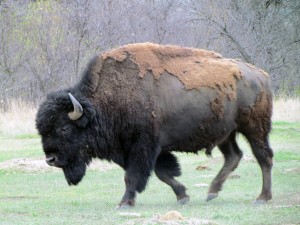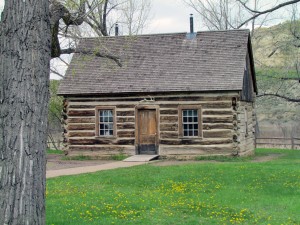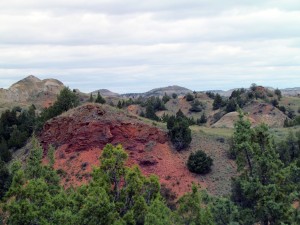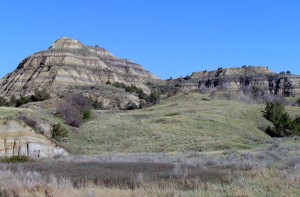A rather grey, chilly and very windy day, we drove north into North Dakota. Theodore Roosevelt National Park has two units and the Elkhorn Ranch site which is undeveloped. Roosevelt came to the badlands of North Dakota to get away from personal tragedy (the deaths of both his wife and mother) and to basically regroup. The wild country along the Little Missouri River proved to be just what he needed.
First coming to the badlands in September 1883, and then returning the next year, Roosevelt became involved in the cattle business. However, by spending time in the Dakota Territory, he became alarmed by the damage that was being done to the land and its wildlife. Conservation increasingly became one of his major concerns. After becoming President in 1901, he established the U.S. Forest Service, signed the 1906 Antiquities Act and got Congressional approval for five national parks. Roosevelt was a prominent figure as a conservationist.
The south unit of the park was our first stop. At the Medora Visitor Center we picked up the requisite park map and newspaper and explored the museum and the Maltese Cross cabin on the grounds.
We then set out to drive the 36-mile scenic loop and stopped at various overlooks and trailheads on the way. Being early for the tourist season, we very nearly had the park to ourselves. In fact, we saw more buffalo and wild horses than people.

 Wild Horses Buffalo
Wild Horses Buffalo
We hiked the Ridgeline Trail, Coal View Trail, and Boicourt Overlook. On the Scoria Overlook trail we saw the reddish layers locally called “scoria.” Heat generated by burning underground coal baked the overlying sediments into a hard, natural red brick.
We enjoyed the hikes but did not find the “wow” factor that is present in most of our national parks. The badlands are not as impressive as Badlands National Park in South Dakota or the badlands of the Bisti Wilderness in New Mexico. The real legacy of this park is the profound effect time spent there had on Theodore Roosevelt and, consequently, his drive to establish parks and wilderness areas for the American public. Originally established in 1947 as a memorial to Theodore Roosevelt, the designation was changed to National Park in 1978.
Cannonball Concretions
We stayed in the North Unit of the park at Juniper Campground. Near the campground were some formations called cannonball concretions. Concretions are formed within rocks by the deposition of minerals around a core, which is then exposed through erosion. They can be any shape but most are round, hence the “cannonball” name. Located in the river valley, we were treated to early morning fog drifting through the trees.
After we left the park and headed north, we were suddenly in the midst of the North Dakota oil boom. If you’re interested, there is an article in the Summer 2014 issue of National Parks, which is the magazine of the National Parks Conservation Association. The article is entitled “Drilling Down” and discusses how fracking adjacent to Theodore Roosevelt National Park is changing the surrounding landscape.
The article can be found online at: http://www.npca.org/news/magazine/all-issues/2014/summer/drilling-down.html
For more information about Theodore Roosevelt National Park: http://www.nps.gov/thro/index.htm

